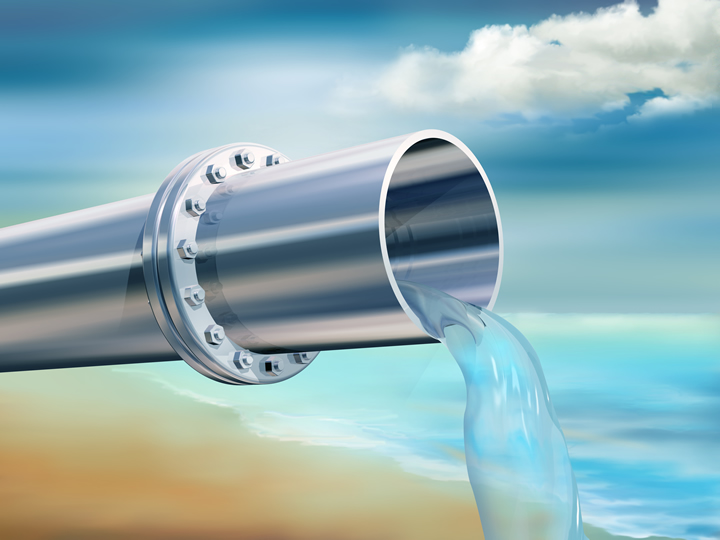How to Conserve Water in Your Manufacturing Process

Every year, more people around the world are realizing the importance of saving our environment, and many are looking for ways that they can make an impact by reducing waste. While they want to help, many people tend to feel overwhelmed by thinking that their small efforts won’t make a difference in the big picture, but that is far from the truth. Small actions can lead to big change. When corporations join the fight and make small changes to their processes, the change can be even more significant.
One change that your manufacturing plant can make starting today is reducing the amount of water you use daily. Water is a precious resource on our planet and by cutting down on wasted water, everyone can live a longer, healthier life. Let’s talk about the importance of saving water and how your factory can do its part.
Why Do We Need To Save Water?
Every living thing on our planet needs water to live, which makes water conservation even more important. While it is true that 70% of the world is made up of water, only a fraction of that is drinkable even with current technology, and many countries don’t even have enough clean water to survive.
From an environmental standpoint, the less water that goes down the drains, the more we can have in our hydropower plants to provide electricity to our homes and businesses. So, by saving water through manufacturing, we can keep your plants open and operating at peak efficiency.
Then there is the financial perspective. When your plant conserves water, you save more money. The water bills alone at a large factory can be astronomical, and the savings you keep could be used for building smarter machines and work processes. By saving water, you could also have access to tax credits which can quickly add up.
Then there is the publicity aspect. If it is known that your business is working towards sustainability by saving water and helping the environment, you will likely get more clients and reach higher profit margins. Now that you understand the importance of saving water, it is time to look at your processes and see where you can make a change.
How To Reduce Water Usage
There are many specific actions you can take to conserve water during your manufacturing processes, and the first step is finding and fixing unwanted leaks in your equipment and machines. To make this process easier, you need to have a leak detection plan in place. This plan will include identifying all of the places where water is present and then utilizing technology to check for leakage. One way to do so is with a listening device such as a Hykron, which includes an accelerometer, microphone, and headphones that you can put near water sources to detect leaks within minutes. Then, you can bring in a plumber to fix the issue.
If you are still lost on the best methods to avoid water waste, then look to those who have done it before. Many manufacturers, including the Ford Motor Company, are using new methods, including Dry-in-Place chemical agents and dry machining, to make major strides in their water conservation goals.
While most manufacturing plants use water to clean and rinse steel to protect it from flash rust, Dry-in-Place is a chemical bath that protects against the same threat but by using 50% less water. Another water-saving process is dry machining, which eliminates the need for cutting fluid while providing the necessary lubrication for your machines to operate efficiently without creating environmental pollution. Plus you will see a nice dip in your water budget. Consider both of these methods for vast water savings.
Get The Employees Involved
Once management has a water conservation plan in place, it is time to get the employees in on the plan so they can do their part to ensure that they are conserving water during their day-to-day tasks. Have a meeting and make it known that your company is striving to work hard to reduce waste in your manufacturing efforts and tell everyone how they can do their part. Once employees have had time to become accustomed to saving water while they work, management should have periodic audits to make sure that the new measures are always being followed.
Keep in mind that wasted water doesn’t always only occur via manufacturing processes but also by regular employee usage throughout the office. Inspect every water source and ensure that the faucets in kitchens and bathrooms are up to code and without leaks. You can also consider replacing toilets and sinks with low-flow alternatives that will cut down water waste exponentially.
To ensure that employees do their part to conserve water and inform management whenever they see unnecessary water leakage, place signage in bathrooms and anywhere else water is commonly used so they know how seriously your manufacturing plant takes their conservation efforts.
If every manufacturing company followed the water-saving tips discussed here today, we could make our planet a healthy place to live for the foreseeable future. Start these processes today, and other factories are sure to follow suit.

Jori is an experienced freelance writer from the Northwestern U.S. She covers a wide range of subjects but takes a particular interest in covering topics related to Technology, Artificial Intelligence, Machine Learning, and Cybersecurity. You can follow Jori on Twitter and LinkedIn.
Comments (0)
This post does not have any comments. Be the first to leave a comment below.
Featured Product

